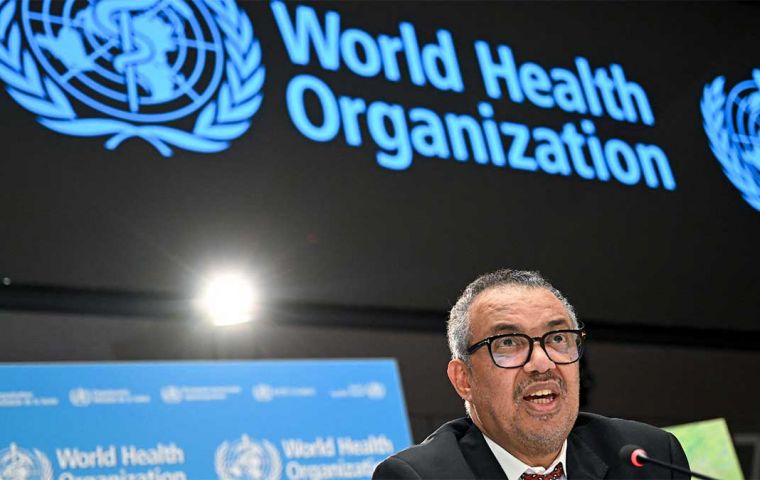MercoPress. South Atlantic News Agency
New SARS-CoV-2 variant under WHO close monitoring for its rapid spread
 The subtype poses no additional threat, but the WHO urged governments to remain vigilant
The subtype poses no additional threat, but the WHO urged governments to remain vigilant The World Health Organization has launched a warning about the rapid spread of the NB.1.8.1 variant of the SARS-CoV-2 virus, which has been detected so far in at least 22 countries, including Egypt, Thailand, the Maldives, and the United States (New York, California, Arizona, Ohio, Washington, and Rhode Island).
A derivative of Omicron, the lineage was first identified in January 2025 and is now under WHO monitoring due to a fast increase in cases and hospitalizations. It accounts for over 10% of global infections and is dominant in Hong Kong and China.
The WHO assessed the public risk as low, with no evidence of increased severity compared to other variants, and existing vaccines are expected to “remain effective against this variant against symptomatic and severe disease.”
Symptoms align with those typical of the malady, such as fever or chills, cough, shortness of breath or difficulty breathing, sore throat, congestion or runny nose, new loss of taste or smell, fatigue, muscle or body aches, headache, nausea or vomiting, and diarrhea.
No travel or trade restrictions are recommended, but countries are urged to stay vigilant, maintain vaccination efforts, and monitor respiratory disease trends. “WHO recommends that countries remain vigilant, adapt to evolving epidemiological trends, and leverage Covid-19 management strategies to strengthen systems for all respiratory disease threats. Member States should continue offering Covid-19 vaccines in line with WHO recommendations,” a statement from the organization noted.
In Thailand, 41,283 new cases were reported on May 30, 2025, with the variant spreading among various age groups. Global test positivity has reached 11%, the highest since July 2024, but the virus lacks a clear seasonal pattern, complicating surveillance efforts.
The evidence so far suggests NB.1.8.1 may spread more easily and may partially sidestep immunity from prior infections or vaccination. These factors could explain its rise in sequencing data, it was explained.
“SARS-CoV-2 continues to evolve, and between January and May 2025, there were shifts in global SARS-CoV-2 variant dynamics. At the beginning of the year, the most prevalent variant tracked by WHO at the global level was XEC, followed by KP.3.1.1. In February, circulation of XEC began to decline while that of LP.8.1 increased, with the latter becoming the most detected variant in mid-March. Since mid-April, the circulation of LP.8.1 has been slightly declining as NB.1.8.1 is increasingly being detected,” the WHO also pointed out.
“Continued monitoring of SARS-CoV-2 variants and transmission is essential, especially as surveillance capacities have been reduced in many regions,” the WHO also warned while insisting vaccination remains pivotal to this strategy, thus urging governments to prioritize immunization, particularly among high-risk groups.




Top Comments
Disclaimer & comment rulesCommenting for this story is now closed.
If you have a Facebook account, become a fan and comment on our Facebook Page!